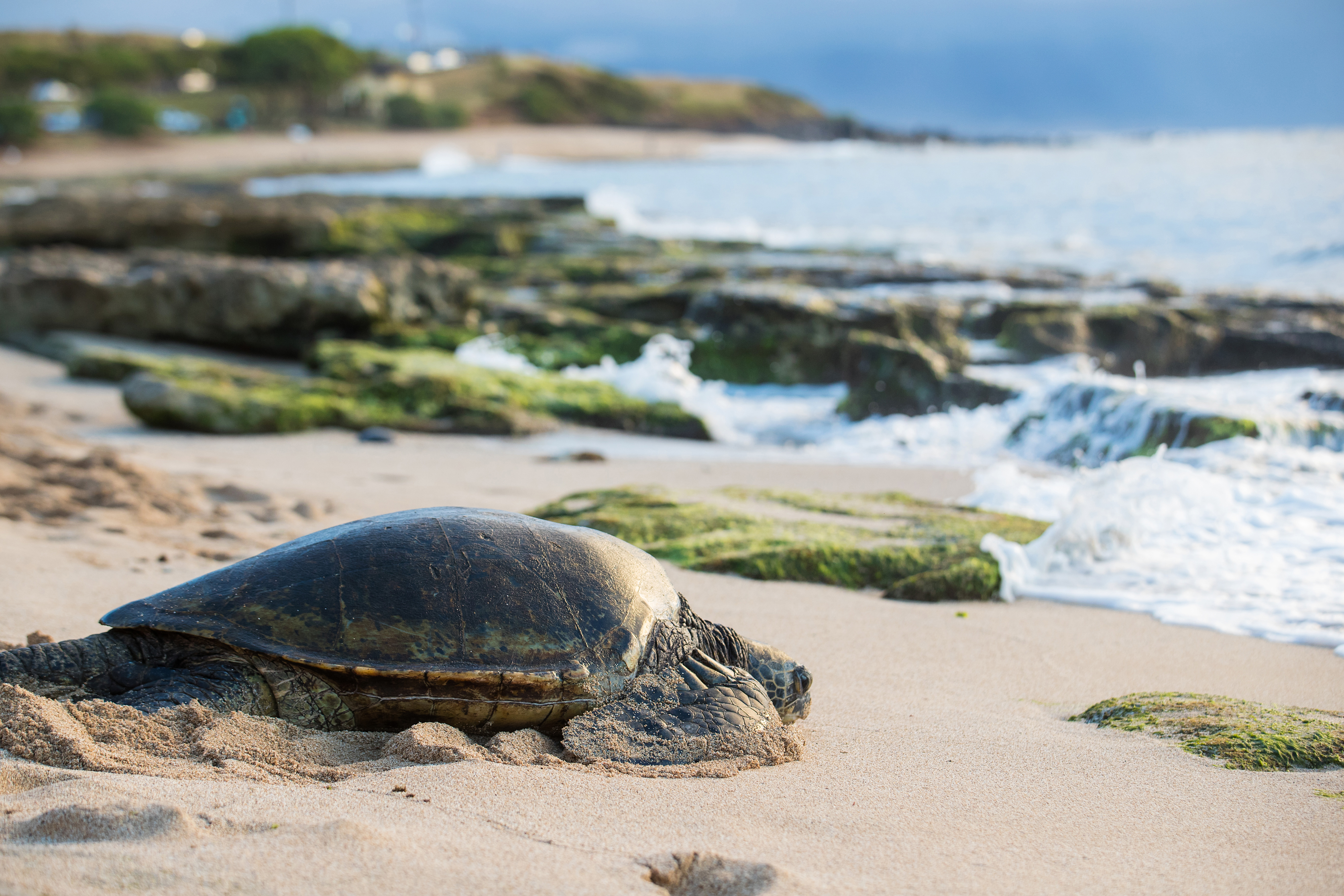
Distribution:
Found in tropical and subtropical oceans
worldwide, including the Atlantic, Pacific,
and Indian Oceans, as well as the
Mediterranean Sea.
Ecosystem:
Coastal areas such as coral reefs,
seagrass beds, and mangroves. They also
inhabit open ocean areas during their migrations.
Feeding Habits:
Primarily herbivorous as adults, feeding mainly on
seagrasses and algae. Juveniles are more omnivorous,
consuming invertebrates like jellyfish, sponges,
and small fish.
Taxonomy:
Class: Reptilia
Family: Cheloniidae
Species: Chelonia mydas
Overview and Physical Characteristics
The green turtle is not named for its external coloration but due to the color of its green fat, caused by its strictly vegetarian diet. Their heart-shaped shells range in color from olive to brown, with a yellowish underside. Typically, green turtles measure about 3 to 4 feet (91 to 122 cm) in length and weigh anywhere from 300 to 500 pounds (136 to 159 kg). Propelled by long, paddle-like flippers, they can reach speeds of up to 35 mph (56 km/h).
Habitat and Distribution
Green turtles prefer tropical and subtropical seas. There are two distinct populations in the Atlantic and Pacific Oceans and the animals are also found in the Indian Ocean. In the U.S. nesting green turtles can be found in the Hawaiian Islands and U.S. Pacific Island territories, as well as Puerto Rico, the Virgin Islands, Florida, Georgia, South Carolina, North Carolina, and Texas.
Ecosystem
Green turtles are pivotal players in their marine ecosystem. By grazing on estuarine and nearshore seagrass beds, they maintain and cultivate healthy seagrass cover, which provides habitat, food, and protected nursery areas for many other fish, shellfish, and crustaceans. Digested seagrass from the green turtle turns into recycled nutrients for other plants and animals as well.
Feeding Habits
While juvenile green turtles are omnivorous and eat a wide variety of plant and animal life – including insects, crustaceans, seagrass, and worms – adult green turtles are herbivores. Their diet consists almost exclusively of seagrass, seaweed, and microalgae.
Behavior and Reproduction
Like most sea turtles, green turtles are known for their long migrations between feeding grounds and nesting sites – sometimes traveling thousands of miles guided by the earth’s magnetic field. Green turtles exhibit strong site fidelity, often returning to the very beach where they were born to lay their eggs. Nesting every 2 to 4 years, females can lay multiple clutches of 100 to 200 eggs in a single season. After incubating for about two months the hatchlings make the perilous journey across the sand, dodging hungry predators to reach the relative safety of the ocean.
Fun Fact
Green sea turtles can live for a remarkably long time. They become sexually mature at 25 to 35 years old and can live up to 70 years or more in the wild.
This story is part of the “Unleashing the Science” series, showcasing how bureaus within the Department of the Interior produce and apply science to ensure responsible management decisions for our planet now and for the future.
--BOEM--
The Department of the Interior’s Bureau of Ocean Energy Management (BOEM) manages development of U.S. Outer Continental Shelf (OCS) energy, mineral, and geological resources in an environmentally and economically responsible way.

